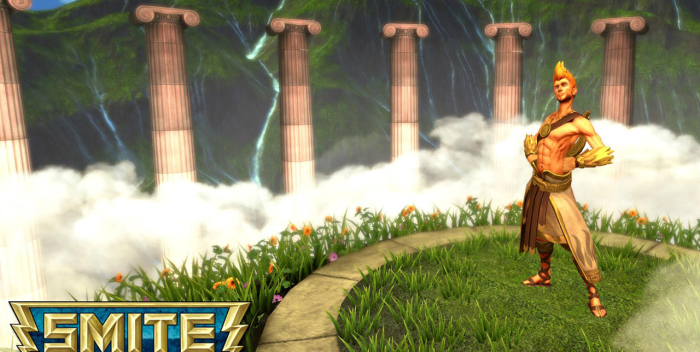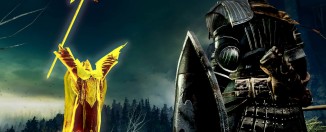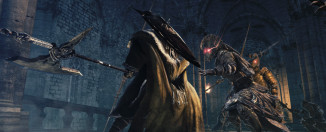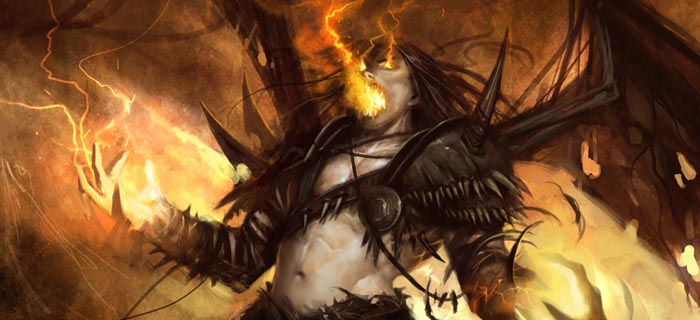Smite voice communication guide: Speak up!
Despite all comparisons drawn between Smite and other MOBAs, there are a few details that set it apart and make it awesome. For one, it’s not a complete clone of a Warcraft III map released 10 years ago. See, it has third person view. Totally different thing. For another, it has a complex yet easily accessible* voice communication system. The only problem is, not many people use it. Maybe its laziness, lack of awareness, or just ignorance about what the commands do.
I know that it sounds trivial and unnecessary, but using voice is trickier than it sounds, and there have been more than a few lost games due to lax communication. It’s a difference between continuing to stay in motion while your keys are locked for half a second and standing still for several seconds because, well, typing exercise was always a bit boring, wasn’t it? Are you now looking to better your ways and become a communicative player? Well aren’t you in luck, because we have assembled an easy list of how to use voice, which you’ll conveniently find below Everything will be fine, if only you use them!
Modifiers
Once you select a voice command, you must then press one of the following buttons to specify which one you want to use. They are the same for all commands, where applicable.
1, 2, 3: Left, middle, and right lane respectively, as seen on your minimap.
Repeat button press: For instance, when you’ve pushed VA for Attack, press A again to do a general Attack command. This can be done on all commands to give a quick, general version.
F, M, G: Specifies Fire Giant, the Minotaur, and Gold Fury respectively.
Self: Many commands (though not all) can be prefaced by pressing S before the actual command to make it into an “I will” command. Rarely used, but handy in some situations, i.e when soloing an objective.
Vital commands
Ideally, these should be muscle memory. If you can’t do these in the stress of battle, practice them more.
VA – Attack: Tells your team to attack a specific lane (telling them to be in position for a gank) or an objective. Most of the time, this is used for VAF or VAG, to indicate the Giant or the Fury.
VF – Missing: If the enemy you’re facing in your lane isn’t around when he should be, call missing. No, don’t type “ss” in chat, we dislike that here. For all you know, the enemy could be setting up a gank on your teammates, and the only way to prevent that is to let them know he’s missing.
VR – Retreat: Teammates pushing up in another lane while your enemy is missing? Squishy at 10% leading your team into a trap in the jungle? Just a general situation that you’d prefer not to be in? Let your team know. Ahead of time, please, there’s no use to calling retreat while your side lanes are already getting pounded to dust because you didn’t call missing or retreat.
VI – Enemy incoming: Use when you know or suspect that your enemies might be headed for the given lane. This can spell the difference between escaping a spotted gank and getting caught in tower range.
Important commands
With these, you should know them, but it’s okay if you take a second to use them.
VD – Defend: As it says. If you notice someone split pushing (pushing while the rest of players fight in another lane), don’t assume that the rest of your team knows. You can call defend on anything that can be defended, including map objectives. You can also use VB Enemy at for the same purpose.
VG – Gank: Commonly used to indicate that you’re going to gank the specified location soon, and that the allies there should go into position to help you do it.
VT – Enemy returned: Opposite of missing, toss this out when your enemies have come back into sight at their usual location. Just as it is important to know when enemies are on the loose, as is it to know when they’re under control. Minimap vision (when the god icons show up on everyone’s minimap) isn’t nearly as far as your own vision, so never assume that your team knows someone is or isn’t missing.
VC – Careful: A weaker version of retreat. Top Tier Tactics; Teaching language when strategy doesn’t work out. In all those cases when you’re not sure where some enemies are and/or your teammates are getting cocky, toss it out there. Like with retreat, it’d be nice if you could do it before the enemy triple kill. Same rules apply for VH Help, only inverted: Call it ahead of time, so that your team actually has a chance to help you.
Other notable commands
VVX – Cancel that: Whatever you’ve said before, it’s now undone. If only real life was that easy. Make sure you don’t need to use this command too easily, lest you not be taken seriously.
VVB/VVGM – Be right back / Out of mana: When you’re recalling, let your partner know that, for a moment, you won’t be around. If you’re out of juice, tell them that you won’t be doing many useful things until you can refill. Seriously, do it. A lot of people don’t and that’s claimed too many unnecessary lives.
VVVR/VVVD Ultimate is ready / is down: There is an indicator as for whose ultimates are off cooldown, but it’s in the very top right corner. If, say, you’re playing Ares and about to dispense some group hugs, let your team know.
Finally, this link will take you to an exercise sheet to test how well you have memorised the commands. Just press cancel when prompted to print, unless you want to of course. You should be using pure muscle memory (remembering movements rather than letters) for voice, but it’s never bad to know what keys you’re pressing.
*Smite in a nutshell: Complex yet easily accessible. Plus awesome.
Interested in Smite? Check it out through this link and start playing for free! If I happen to be online when you are, send me a message and we might play together! (Username is, obviously, Toraka.) This message is not sponsored, unless you count giving me favor and being an awesome game as sponsoring.







